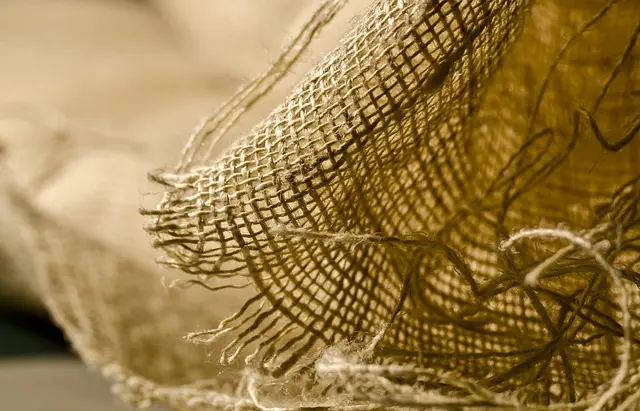Muscle soreness, known as delayed-onset muscle soreness (DOMS), is commonly experienced after intense physical activity. Stem and vein kratom, derived from the Mitragyna speciosa tree, is emerging as a natural supplement that may aid in relieving muscle soreness. Kratom contains over 40 alkaloids, with mitragynine and 7-hydroxymitragynine being the most prominent. Different kratom strains—such as Maeng Da and Bali—offer varying effects, with Maeng Da known for its energizing and pain-relieving properties, and Bali for its calming benefits. When selecting a kratom product, it's crucial to choose from reputable stem and vein kratom vendors who provide lab-tested products for safety and efficacy. These vendors offer strains with different alkaloid profiles that can influence the pain relief outcomes. For optimal results and safe usage, users should start with a modest dosage, consider individual body responses, and consult healthcare professionals, especially if taking other medications or having pre-existing health conditions. A balanced approach to recovery, including proper nutrition, hydration, rest, and adherence to legal regulations, complements the use of kratom for muscle soreness relief.
Muscle soreness can be a debilitating hindrance to both athletic performance and daily activities. Whether from intense workouts, heavy lifting, or physical exertion, finding effective relief is paramount for recovery and continued progress. This article delves into the natural potential of kratom, a botanical substance, in alleviating muscle soreness. We’ll explore its mechanisms of action, how to source high-quality stem and vein kratom from reputable vendors, and integrate it safely into your recovery regimen. Additionally, we’ll compare popular strains like Maeng Da and Bali to discover which may be most effective for your needs. Join us as we navigate the intersection of natural remedies and muscle health, with a focus on kratom’s role in providing soreness relief.
- Understanding Muscle Soreness and Its Causes
- Kratom's Role in Muscle Soreness Relief: An Overview
- The Science Behind Kratom Alkaloids and Their Effects on Pain
- Selecting Reputable Stem and Vein Kratom Vendors for Optimal Quality
- How to Safely Incorporate Kratom into Your Muscle Recovery Routine
- Comparing Strains: Maeng Da, Bali, and Beyond for Soreness Relief
Understanding Muscle Soreness and Its Causes

Muscle soreness, often referred to as delayed-onset muscle soreness (DOMS), can arise from various activities, including intense exercise, heavy lifting, or even from repetitive movements. The phenomenon occurs when muscles experience microtrauma from strenuous activity, leading to inflammation and pain. This physiological response is the body’s natural healing process at work; as tiny tears in muscle fibers heal, they become stronger, contributing to muscle growth and adaptation over time. Understanding the causes of muscle soreness is crucial for addressing it effectively.
Kratom, a botanical alkaloid derived from the leaves of Mitragyna speciosa, has garnered attention within the wellness community for its potential to alleviate muscle pain. Stem and vein kratom vendors offer products that are specifically processed to retain higher concentrations of alkaloids in the stem and vein areas of the leaf. These specific strains are believed to possess analgesic properties, which may be beneficial for soothing aching muscles. When incorporating kratom into a recovery regimen, it’s important to consider dosage, as well as individual sensitivity, to maximize its effects without overburdening the body. Users often report reduced discomfort and improved recovery times, making kratom a popular natural remedy for muscle soreness relief. As with any supplement, it’s recommended to consult with a healthcare professional before integrating kratom into one’s health routine.
Kratom's Role in Muscle Soreness Relief: An Overview

When exploring natural remedies for muscle soreness, kratom emerges as a compelling option, particularly with the advent of stem and vein kratom vendors offering tailored products. Kratom, derived from the leaves of Mitragyna speciosa, has been traditionally used in Southeast Asian cultures for its various health benefits. Among these potential benefits is its role in alleviating muscle soreness, a property that has garnered attention in fitness and wellness communities. The active compounds found within kratom leaves, known as alkaloids, interact with the body’s opioid receptors, which can help manage pain levels. Specific strains of kratom, such as those offering high concentrations of 7-hydroxymitragynine, are particularly renowned for their analgesic properties. Users often report relief from muscle soreness following physical exertion or chronic pain conditions when using stem and vein kratom products.
The efficacy of kratom in providing muscle soreness relief is multifaceted. It’s not merely about the alkaloid content but also the specific strain, vein color (red, green, or white), and how these factors influence the body’s response to pain. Stem and vein kratom vendors provide a variety of strains, each with its unique alkaloid profile and potential for pain relief. For instance, red vein kratom is often favored for its calming effects and long-lasting analgesic properties, which can be particularly beneficial for individuals experiencing persistent muscle soreness. Conversely, white vein kratom strains are known for their invigorating and stimulating effects, which might complement the recovery process by enhancing overall well-being and promoting a more active approach to healing. Users interested in incorporating kratom into their pain management regimen should consult with healthcare professionals to ensure safety and appropriateness based on their individual health circumstances.
The Science Behind Kratom Alkaloids and Their Effects on Pain

Kratom, a tropical evergreen tree native to Southeast Asia, has been used traditionally for its medicinal properties. The pain-relieving effects associated with kratom are attributed to its alkaloids, particularly mitragynine and 7-hydroxymitragynine. These compounds interact with the body’s opioid receptors, offering analgesic effects that can alleviate various types of pain. The alkaloid profile of kratom is complex, with over 40 known alkaloids contributing to its wide spectrum of actions. Among these, mitraphylline and 7-hydroxymitragynine are the most prominent in terms of their potent analgesic effects. These alkaloids modulate pain signals by binding to opioid receptors in a manner similar to morphine but without its severe side effects.
When considering kratom for muscle soreness relief, it’s important to differentiate between the various forms available on the market. Stem and vein kratom vendors offer products that are rich in specific alkaloids found in these parts of the kratom plant. The stem and vein segments contain a distinct alkaloid composition compared to the leaf, which can influence the potency and type of pain relief experienced. For instance, some users may prefer stem and vein kratom due to its slower onset and longer-lasting effects, which are suitable for chronic or persistent muscle soreness. The choice of kratom strain and its alkaloid content can significantly impact the user’s experience with pain management, making it crucial to select a reputable vendor specializing in stem and vein kratom products. Users should always approach the use of kratom with caution, adhering to appropriate dosages and considering consulting healthcare professionals before incorporating it into their pain relief regimen.
Selecting Reputable Stem and Vein Kratom Vendors for Optimal Quality

When exploring the realm of stem and vein kratom for muscle soreness relief, selecting a reputable vendor is paramount to ensure both safety and efficacy. The quality of kratom can vary significantly between vendors, with some offering products that are purer and more potent than others. Trustworthy stem and vein kratom vendors typically adhere to strict cultivation and harvesting standards, ensuring that the alkaloid profiles within their products are consistent and potent. They often provide third-party lab test results, which confirm the accuracy of their product labels and eliminate the risk of contamination. It’s advisable to look for vendors with transparent practices and a history of positive customer reviews, as they are more likely to supply high-quality kratom. Additionally, these vendors will have a wide selection of strains, allowing you to experiment and find the most effective one for your specific muscle soreness. By doing due diligence in choosing a trustworthy stem and vein kratom vendor, you set the foundation for a positive and potentially beneficial experience with kratom for muscle relief. Always prioritize vendors that prioritize quality control and customer satisfaction to ensure the best possible outcome when using kratom as part of your health regimen.
How to Safely Incorporate Kratom into Your Muscle Recovery Routine

When integrating kratom into your muscle recovery routine, it’s crucial to approach its use with caution and knowledge. Kratom, a plant from Southeast Asia, has gained popularity for its potential benefits in muscle soreness relief. To safely incorporate kratom, consider the strain’s vein color—red, white, or green—as each may offer distinct effects. Red vein kratom strains are often associated with pain-relieving properties, which can be particularly beneficial post-exercise when muscles are recovering and sore. To ensure safety and efficacy, start with a low dosage to gauge your body’s response and gradually increase as needed. It’s also imperative to source your kratom from reputable stem and vein kratom vendors who provide lab-tested and high-quality products. These vendors prioritize purity and potency, which is essential for both safety and the desired recovery outcomes. Additionally, keep in mind that individual sensitivity to kratom can vary significantly, so it’s important to listen to your body and consult with a healthcare professional before making kratom a regular part of your muscle recovery regimen.
Furthermore, incorporating kratom into your routine should be done in conjunction with other recovery practices such as adequate hydration, proper nutrition, and rest. Stem and vein kratom vendors often provide guidance on optimal dosing based on user experience and strain specificity. It’s advisable to follow these guidelines and to remain informed about the legal status of kratom in your region, as regulations can vary. By adopting a balanced approach that includes quality kratom from trustworthy sources and a holistic view of recovery practices, you can support your body’s natural healing processes effectively. Remember to monitor your intake and adjust according to how your body reacts, ensuring a safe and beneficial addition to your muscle recovery routine.
Comparing Strains: Maeng Da, Bali, and Beyond for Soreness Relief

When seeking natural relief from muscle soreness, many turn to kratom, a botanical supplement derived from the leaves of Mitragyna speciosa trees. Among the various strains available, Maeng Da, Bali, and others stand out for their potential efficacy in alleviating discomfort. Maeng Da, known for its invigorating and pain-relieving properties, is a popular choice among those experiencing muscle soreness. Its high alkaloid content, including mitragynine and 7-hydroxymitragynine, contributes to its potency, making it a preferred option for many individuals. For those preferring a more balanced experience, Bali kratom is often sought after, offering a calming effect that complements pain relief. It’s important to note the nuanced differences between strains, as they can influence the user’s experience. Beyond these two well-known strains, there are numerous other kratom variants, each with its unique profile and potential benefits for soreness relief. When selecting a strain, considering stem and vein kratom vendors is crucial, as these specialized vendors offer products that highlight specific alkaloid concentrations based on the color of the stem and vein. This attention to detail ensures that users can select a product tailored to their individual needs, optimizing the relief they seek from muscle soreness. Whether one opts for the energizing Maeng Da or the soothing Bali kratom, it’s essential to approach its use responsibly and with an understanding of how these compounds interact with one’s body. Always consult with a healthcare professional before incorporating kratom into your wellness regimen, especially if you have underlying health conditions or are taking other medications.
Muscle soreness can be a significant hurdle for individuals engaging in physical activities or those recovering from injuries. The exploration into the potential benefits of kratom as a means for muscle soreness relief presents an intriguing alternative to conventional treatments, supported by the science of its alkaloids and their analgesic properties. Selecting reputable stem and vein kratom vendors is crucial for ensuring the quality and safety of this natural remedy. By understanding how different strains like Maeng Da and Bali may contribute to muscle recovery, individuals can make informed decisions that align with their personal needs. Incorporating kratom into a muscle recovery regimen thoughtfully and safely can offer relief and aid in maintaining an active lifestyle.






